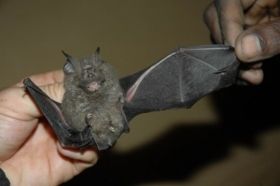A new study by scientists from WCS (Wildlife Conservation Society) and other groups predicts that the effects of climate change will severely impact the Albertine Rift, one of Africa’s most biodiverse regions and a place not normally associated with global warming.
Of the species existing within this region, the authors anticipate that nearly 50 percent of the mammals, birds, reptiles, and other organisms found nowhere else on earth will become threatened according to the criteria of the Red List, an inventory of imperiled animals and plants maintained by the International Union for Conservation of Nature (IUCN).
The study titled “Conservation of the endemic species of the Albertine Rift under future climate change” appears in the online version of the journal Biological Conservation. The authors are: S. Ayebare, D. Kujirakwinja, D. Segan of WCS; and A.J. Plumptre of WCS and the Conservation Science Group in Cambridge, United Kingdom.
“Much of the Albertine Rift is mountainous terrain, and the species that inhabit these places have narrow ranges,” said WCS scientist Dr. Andrew Plumptre, one of the authors of the study. “This makes many species especially vulnerable to climate change. Using distribution models to predict how ranges will shift as climate and precipitation levels change provide us with the means to determine how well existing protected areas will safeguard wildlife into the future.”
Read more at Wildlife Conservation Society
Image: The Willard's horseshoe bat, a newly described species from eastern Democratic Republic of Congo and another species predicted to possibly go extinct due to climate change in the future. (Credit: A.J. Plumptre)


